Gyula Jungfer's grandfather, András Jungfer, was a metalworker and ornamental blacksmith of German origin. He moved to Pest in 1786 and founded a metalworker’s guild. His son created an independent factory. His grandson, Gyula Jungfer, born on 9 January 1841, received his industrial license in 1866 after several years of training in Western Europe.
He opened his first independent workshop in Hatvani (Kossuth Lajos) Street, with only one assistant. Later he moved to Esterházy Street for a short time. In 1872 he moved his headquarters to 6 Berzsenyi (at the time, Gázgyár) Street in Józsefváros. The ornamental metal factory he founded there operated without interruption until its nationalisation in 1949.
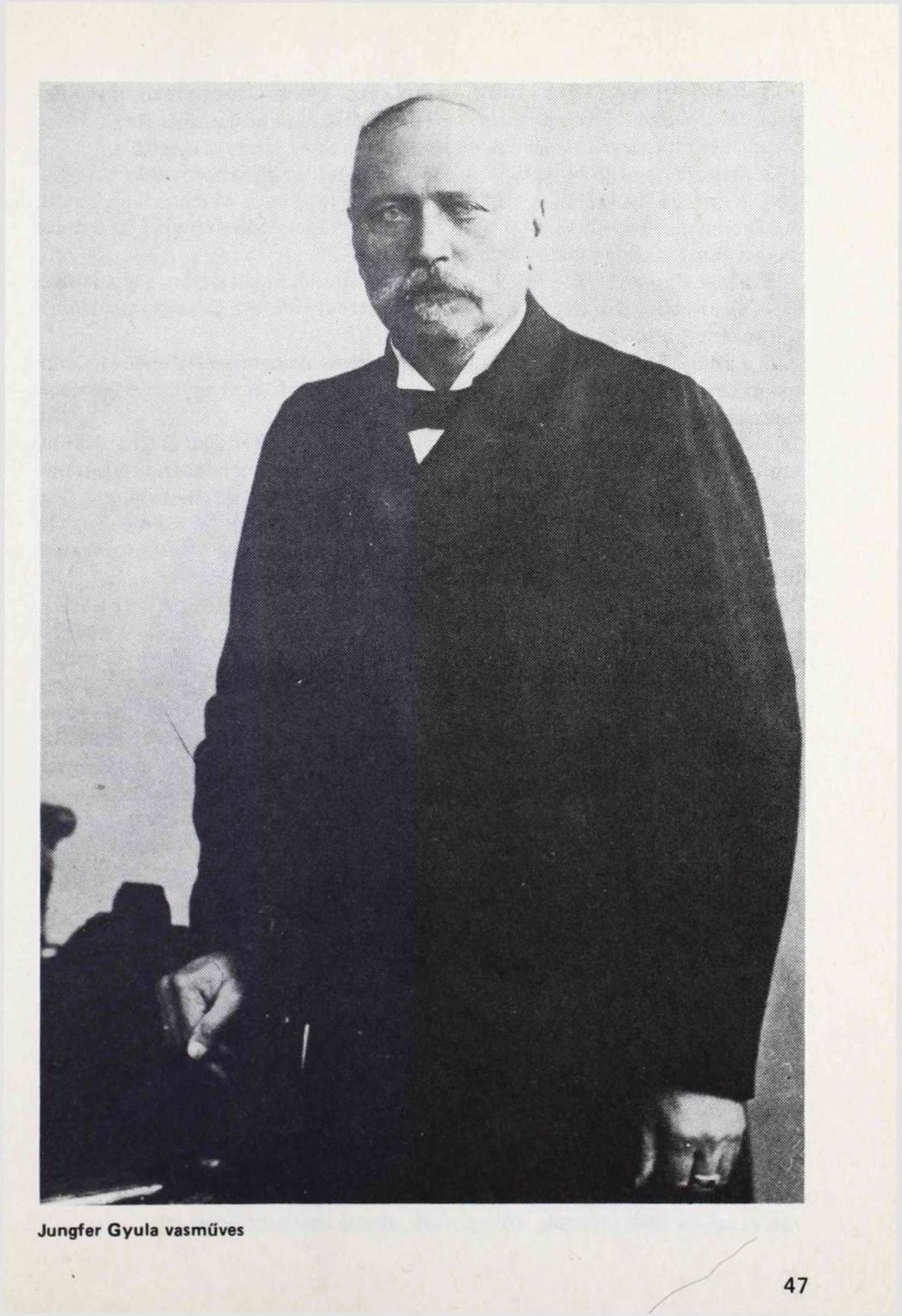
Portrait of Gyula Jungfer (Source: Történeti Múzeumi Közlemények, iss. 1–2., 1984)
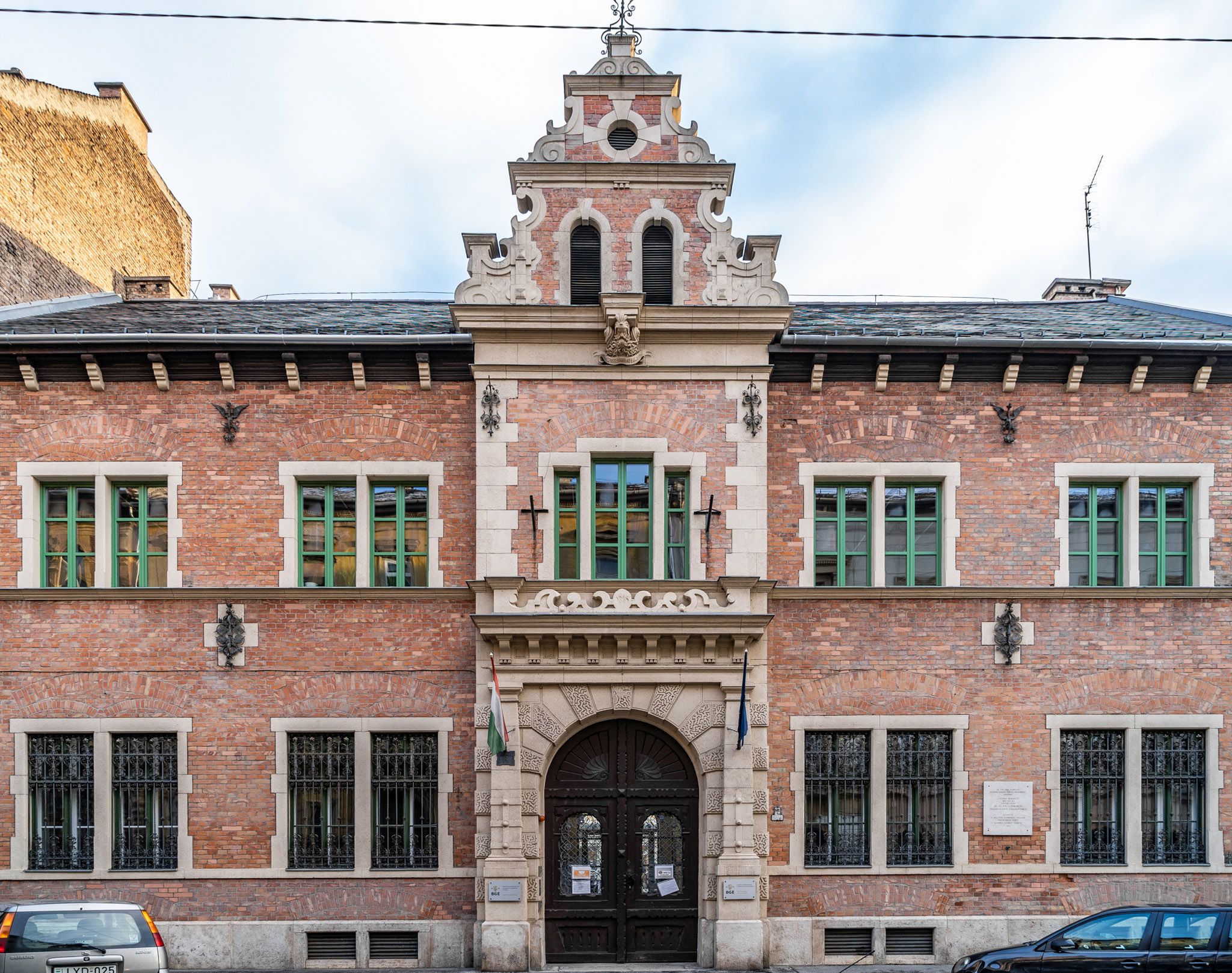
The Jungfer factory operated at 6 Berzsenyi Street in Józsefváros for 77 years (Photo: Both Balázs/pestbuda.hu)
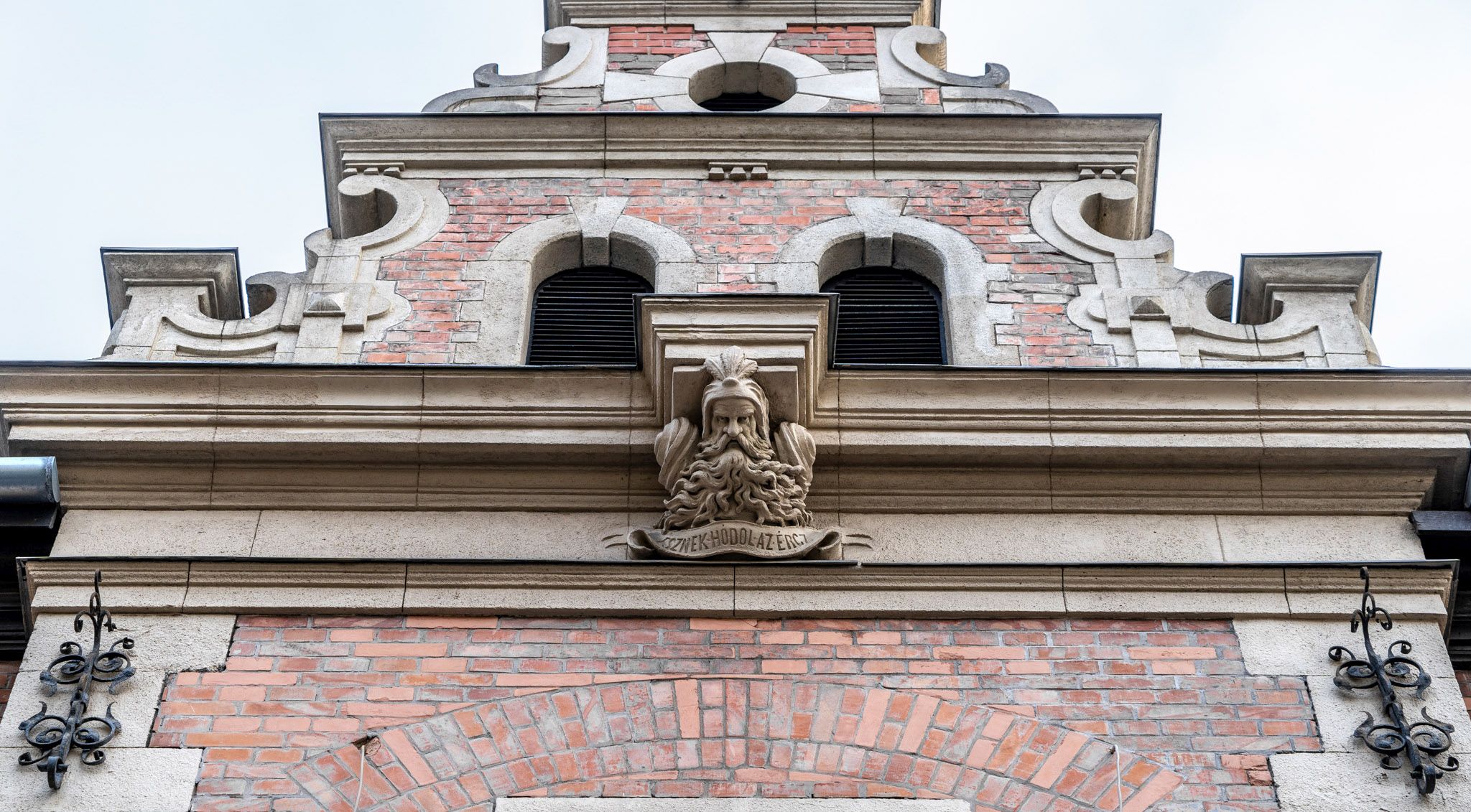
The inscription on the facade of the former factory reads: "Ore bends to reason" (Photo: Both Balázs/pestbuda.hu)
The workshop in Józsefváros has to be expanded due to the influx of orders. By 1887 it employed one hundred and fifty workers. There was a growing demand for artistic locksmith work in the quickly developing Budapest of the time. Many representative public buildings of economic, cultural and ecclesiastical life were erected in the period.
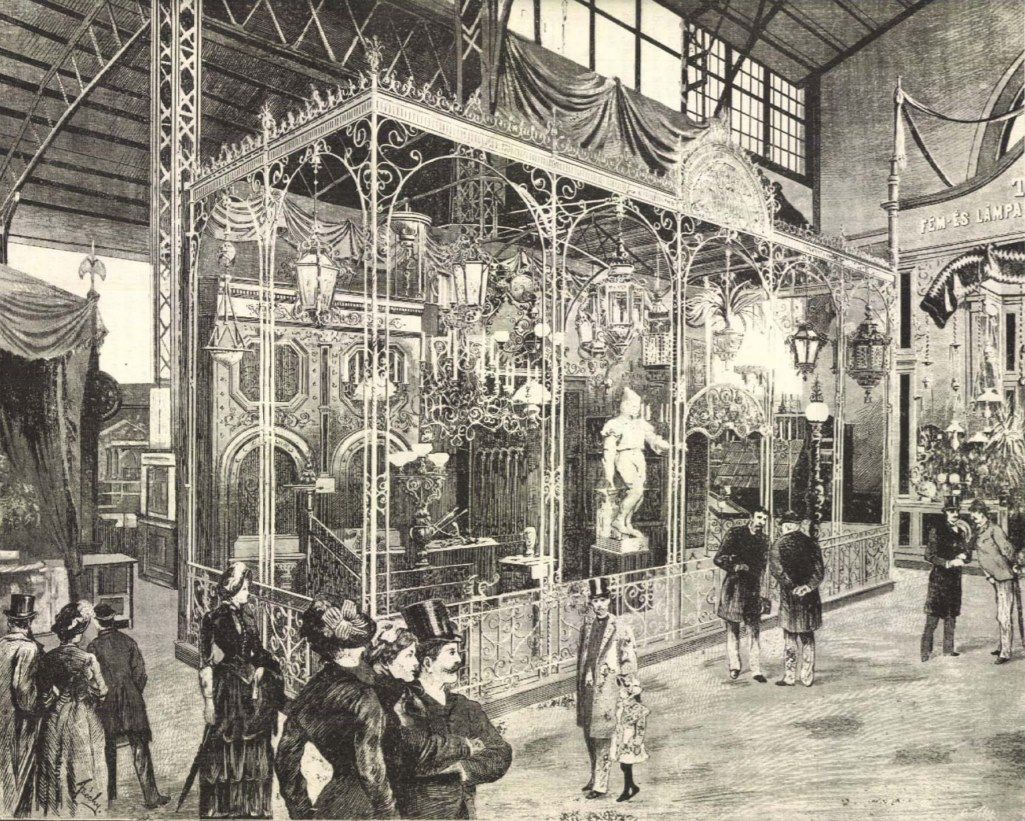
Products of the Jungfer Factory at the 1885 National General Exhibition (Source: Vasárnapi Ujság, 31 May 1885)
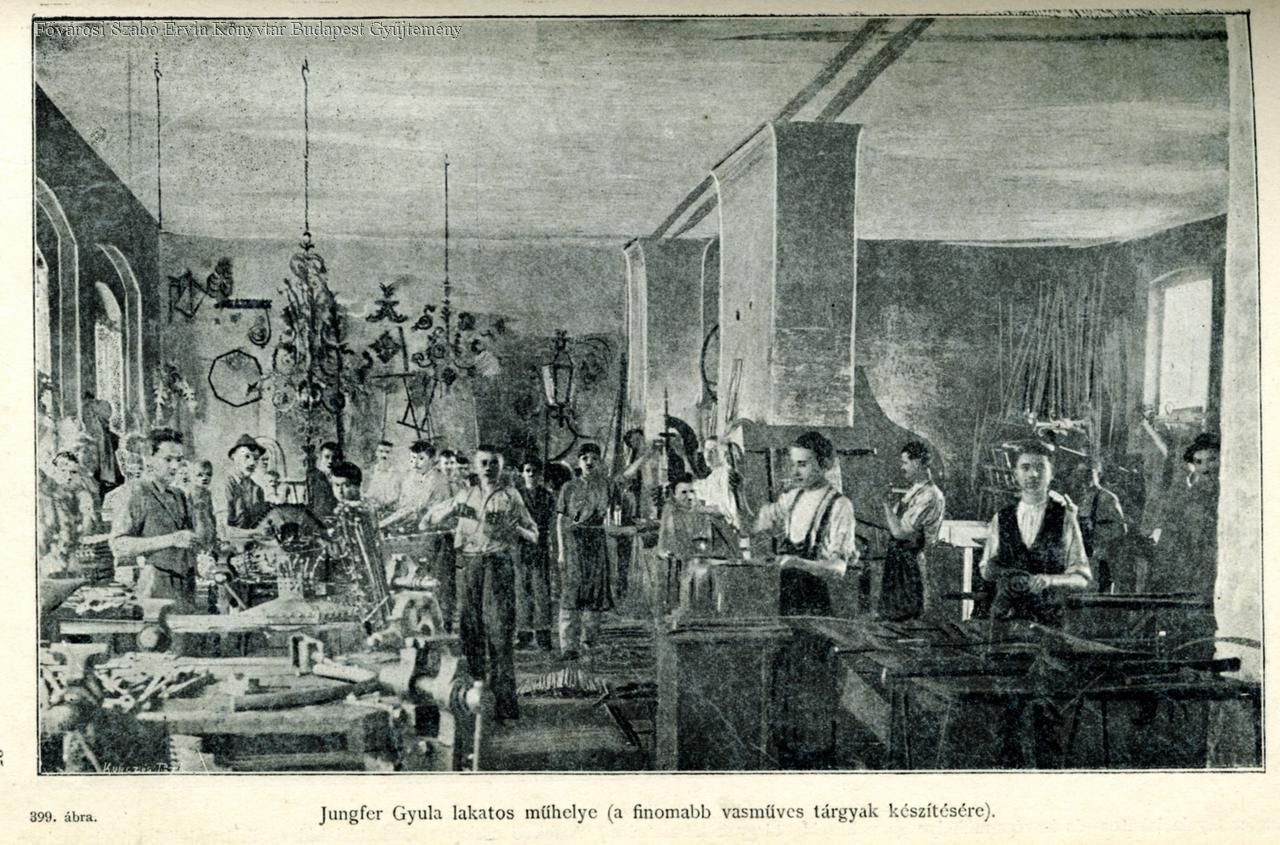
Employees of the Jungfer plant on Berzsenyi Street at work (Source: FSZEK Budapest Collection)
Jungfer's work was unique due to his transition from previously used cast iron techniques to artistic wrought iron products. His goal was to return to the old traditions of ironworking, but he also surpassed Renaissance and Baroque designs with naturalist plant patterns, Art Nouveau-style ornamentations and technical innovations (using majolica, and ceramics).
His first true success was international. The wrought-iron, plant-patterned grilles and candlesticks displayed from his company at the 1878 exhibition in Paris garnered undivided recognition. Henceforth, he received international orders regularly, including form the royal house of Serbia.
At the National General Exhibition in 1885 in City Park, Jungfer won first place in two categories. Vasárnapi Ujság praised his works on display in the Industrial Hall as follows:
"The iron lattice that encloses the exhibits itself, the giant gates in the background made partly of wrought iron and decorated with wrought ornaments, the richly decorated chandeliers and tables all testify to an extremely high level of technical skill and taste. Moving closer to this outstanding craftsman's exhibit, visitors can admire the bouquet of wrought iron roses placed on a wrought iron table. Princess Stephanie was gracious to accept one of the roses. Looking closely at the forms wrought from copper, one can do nothing but acknowledge that in Jungfer's hands, industry has been elevated to art."
The embossed sculpture made of copper designed by Leo Fessler, noted in the article, showed a medieval blacksmith and later became the company's signboard. Interestingly, Jungfer himself was the model of the work. In 1882 a costume ball was organised in the Art Gallery in honour of the painter Mihály Munkácsy, and Jungfer appeared in similar medieval dress. The signboard was removed from the building on Berzsenyi Street after nationalisation; today it is part of the Museum of Applied Arts’ collection.
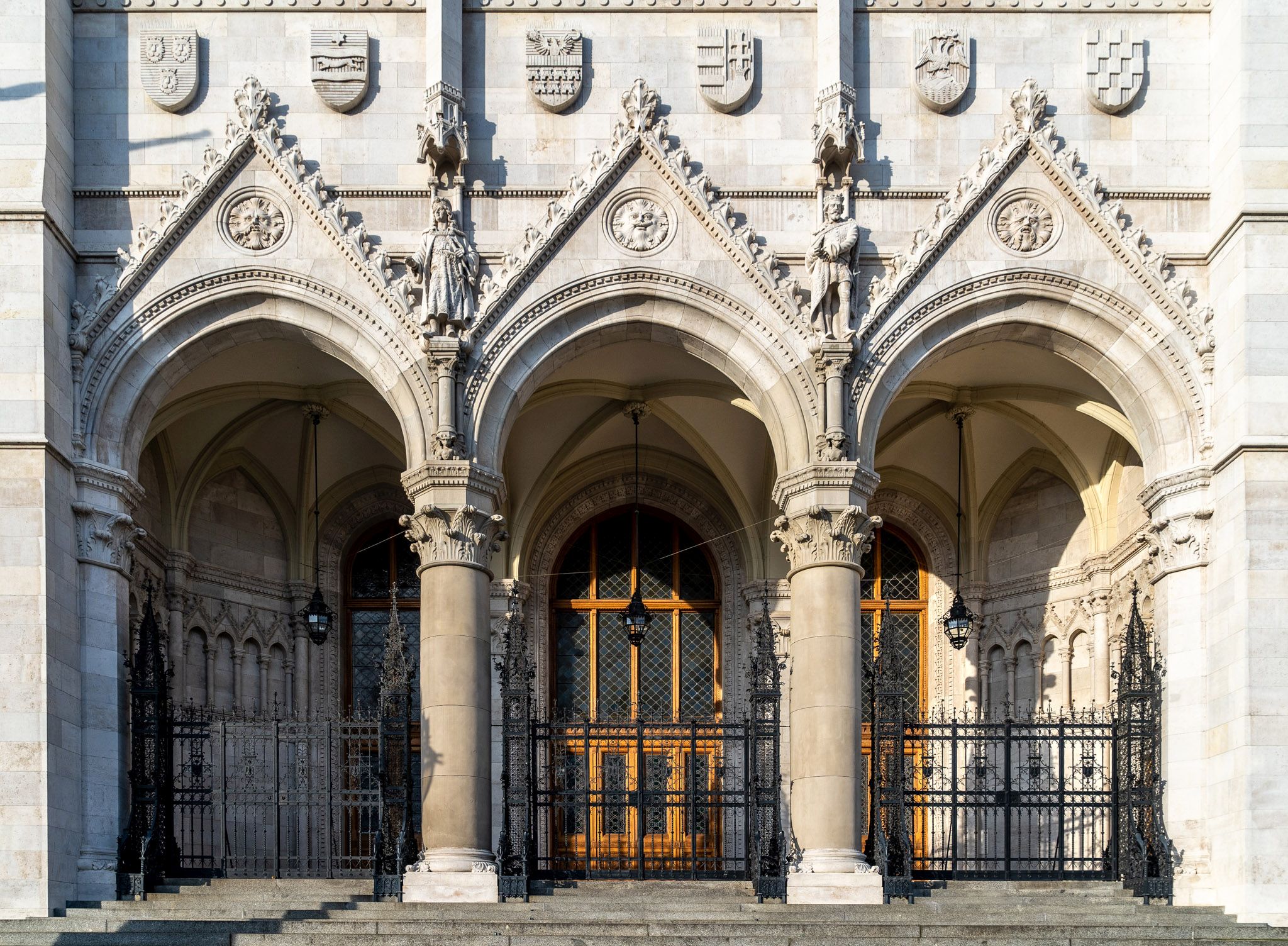
The main gate of the Parliament building (Photo: Both Balázs/pestbuda.hu)
The Parliament building can be highlighted as one of his major works. Numerous famous artists and workshops of the age worked together under the leadership of Imre Steindl to complete the building. Most of the ironwork was done by Jungfer, and the main gate was the cornerstone of his work. The versatility of his talent can be seen in the fact that he designed the copper knight statues that stand on the roof of the Parliament and the silver decorations of the album compiled in honour of Imre Steindl after the stunning building's completion.
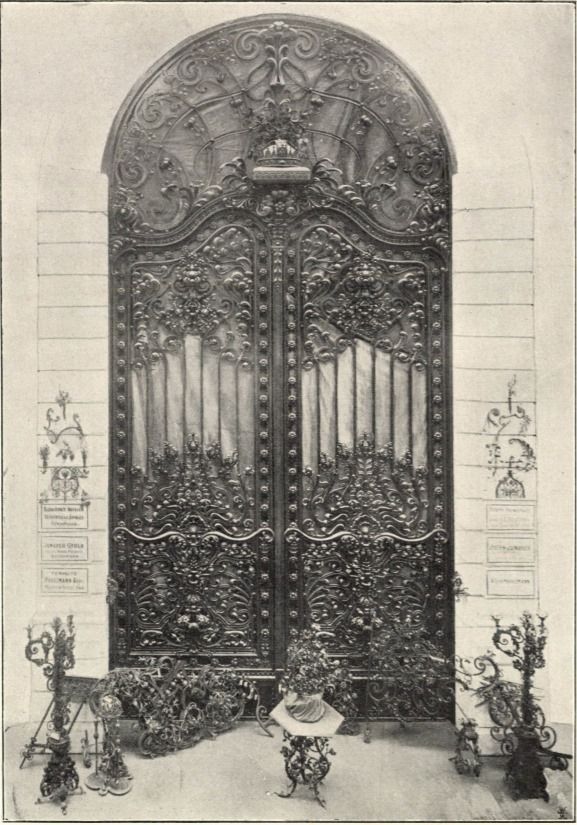
The lattice gate of the Royal Palace was destroyed in World War II (Source: Magyar Iparművészet, 1900/6)
The main gate of the royal palace, installed during the redesign led by Alajos Hauszmann was destroyed in World War II. Jungfer also created the bronze decorations of the representative Saint Stephen's Hall, which was also destroyed and is currently being rebuilt. He also designed the neo-baroque Habsburg gate that separates the Castle District from the Royal Palace.
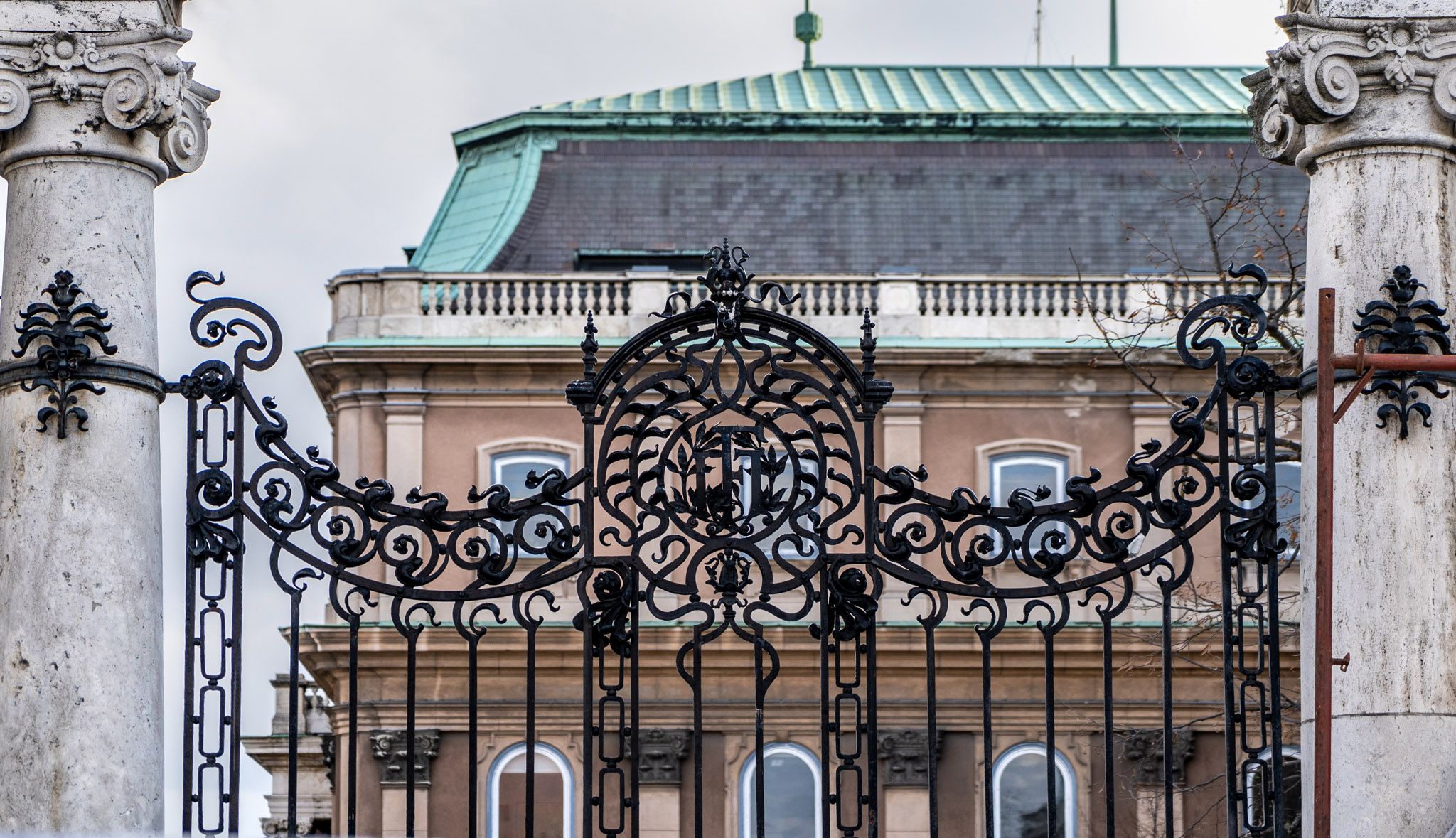
The decorative lattice of the Habsburg Gate was also created by Jungfer (Photo: Both Balázs/pestbuda.hu)
The ironworks of the renaissance revival triple gate of the Castle Garden Bazaar, the Opera House, the Kunsthalle, the Vigadó, the Main Customs House, Keleti Railway Station, the Central Market Hall and the Wenckheim Palace are also significant elements of his Jungfer oeuvre. The spectacular peacock-styled gates of Gresham Palace emphasise the Art Nouveau character of the building.
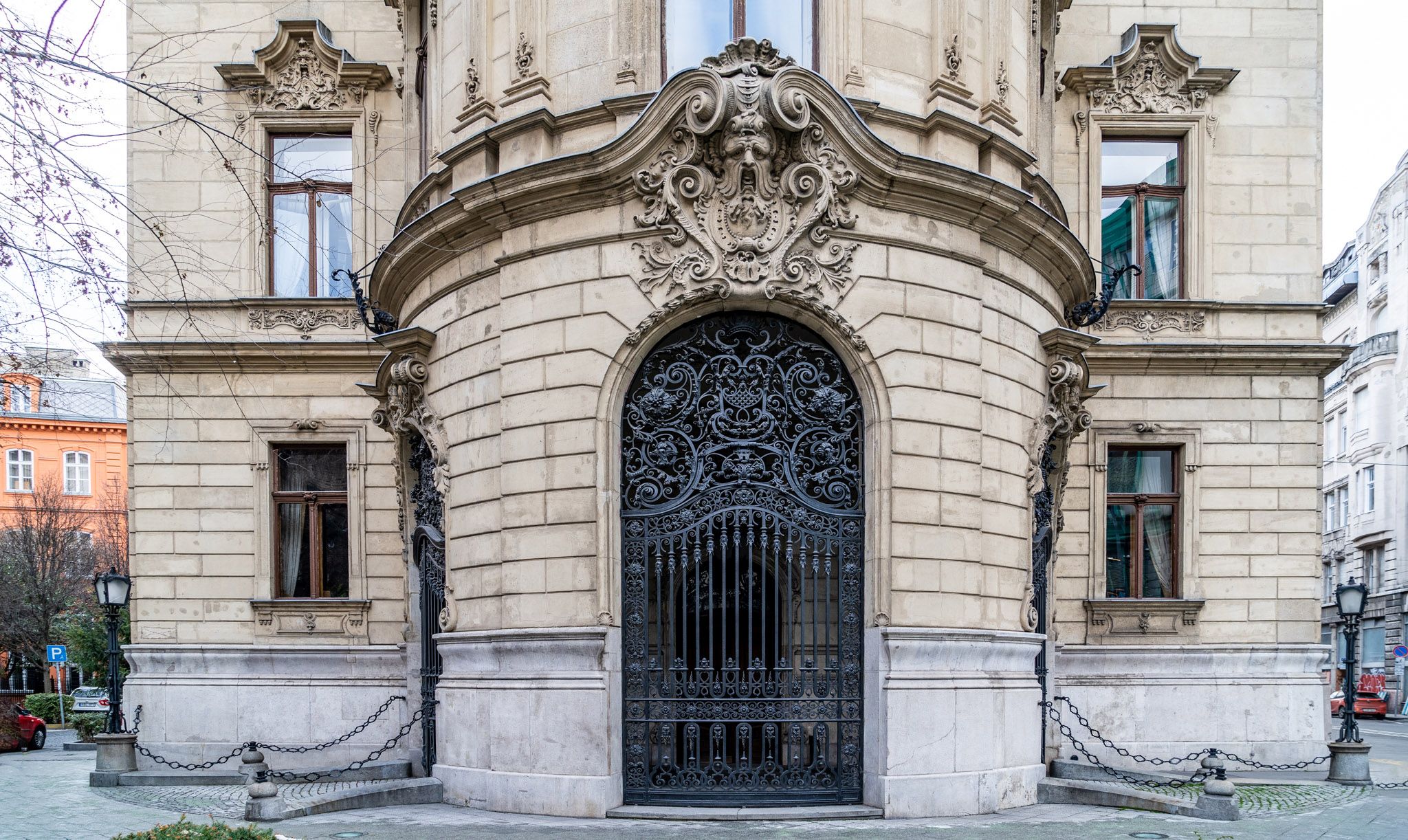
The gates of the Wenckheim Palace are truly ornaments of the building (Photo: Both Balázs/pestbuda.hu)
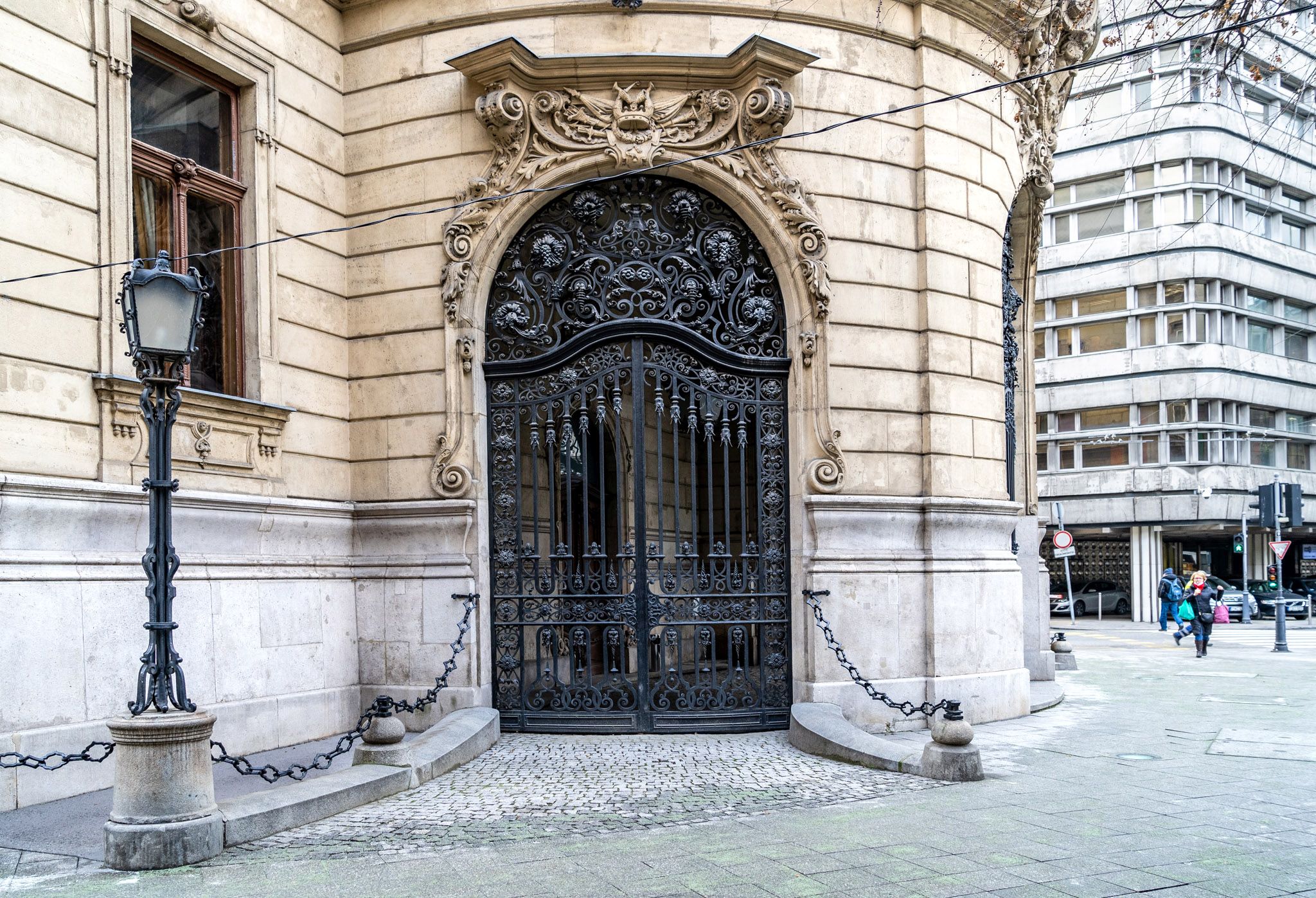
Both the gate and the candelabra are products from Jungfer's factory (Photo: Both Balázs/pestbuda.hu)
Continuing to ecclesiastic buildings, he designed the Renaissance-style bronze door fittings of the eastern chapel in Saint Stephen's Basilica, the baptismal font and crown chandelier of the church on Rozsók Square, and also contributed to the decorations of the church on Bakáts tér, the Franciscan church in Pest and Saint Ladislaus's Church in Kőbánya.
He completed outstanding ironworks for bank buildings as well, including the gates of the Magyar Általános Takarékpénztár ('Hungarian General Savings Bank' – 5th District, 6 József Attila Street) decorated with sunflowers, and the metalworks of the Magyar Leszámítoló és Pénzváltó Bank ('Hungarian Settlement and Currency Exchange Bank' – 5th District, 6 Dorottya Street) and the Magyar Országos Bank ('Nationwide Hungarian Bank' – 5th District, 4 Nádor utca).
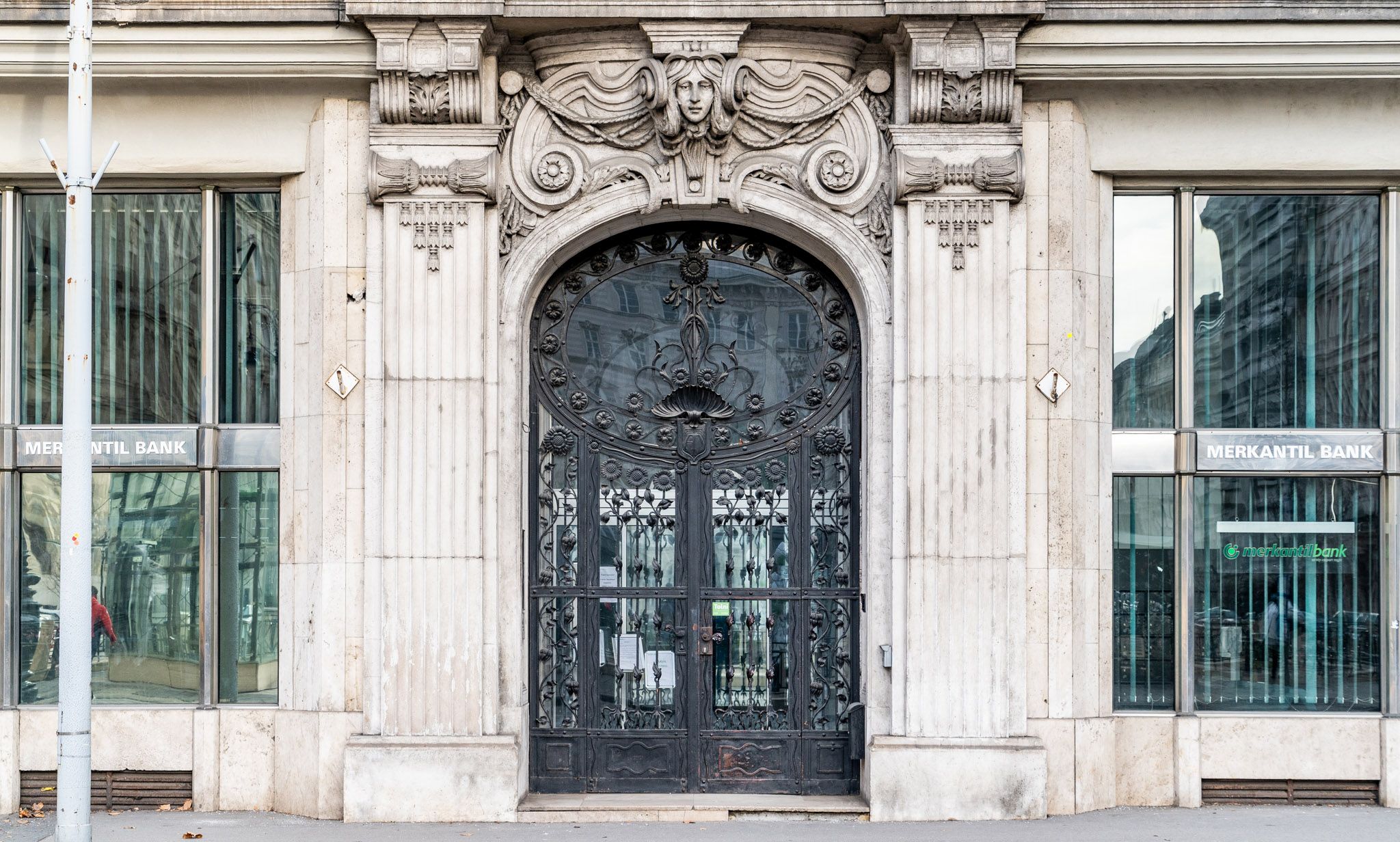
The gate of the former Hungarian General Savings Bank decorated with sunflowers at 6 József Attila Street (Photo: Both Balázs/pestbuda.hu)
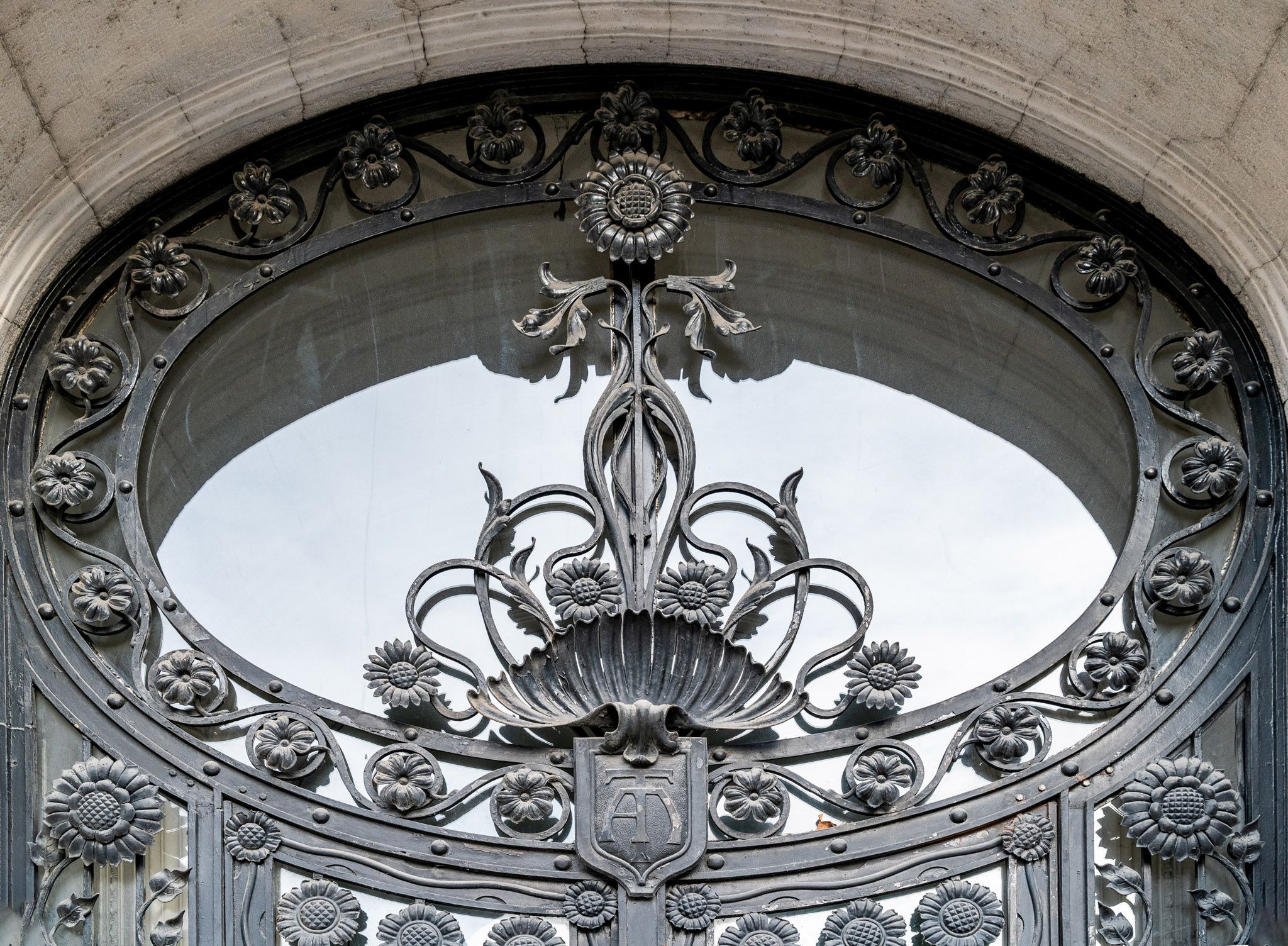
Detail of the sunflower gate (Photo: Both Balázs/pestbuda.hu)
Gates created by the metalsmith also adorn several palaces on Andrássy Avenue and the entrances to many high-end residential buildings built at the time. The garden gate of the palace of the former MÁV Pension Institute (6th District, 88–90 Andrássy Avenue), the decorations of Saxlehner Palace (6th District, 3 Andrássy Avenue), the Krausz Palace (6th District, 12 Andrássy Avenue), the Kreische Palace (6th District, 14 Andrássy Avenue), the ironworks of the Batthyány Palace on Teréz Boulevard and the György Ráth Villa on Városligeti Avenue, and the double gate, handrail, and chandeliers of the huge residential building built by the Hungarian General Coal Mine Pension Institute on Kossuth Lajos Square are all wonderful works from Jungfer's oeuvre.
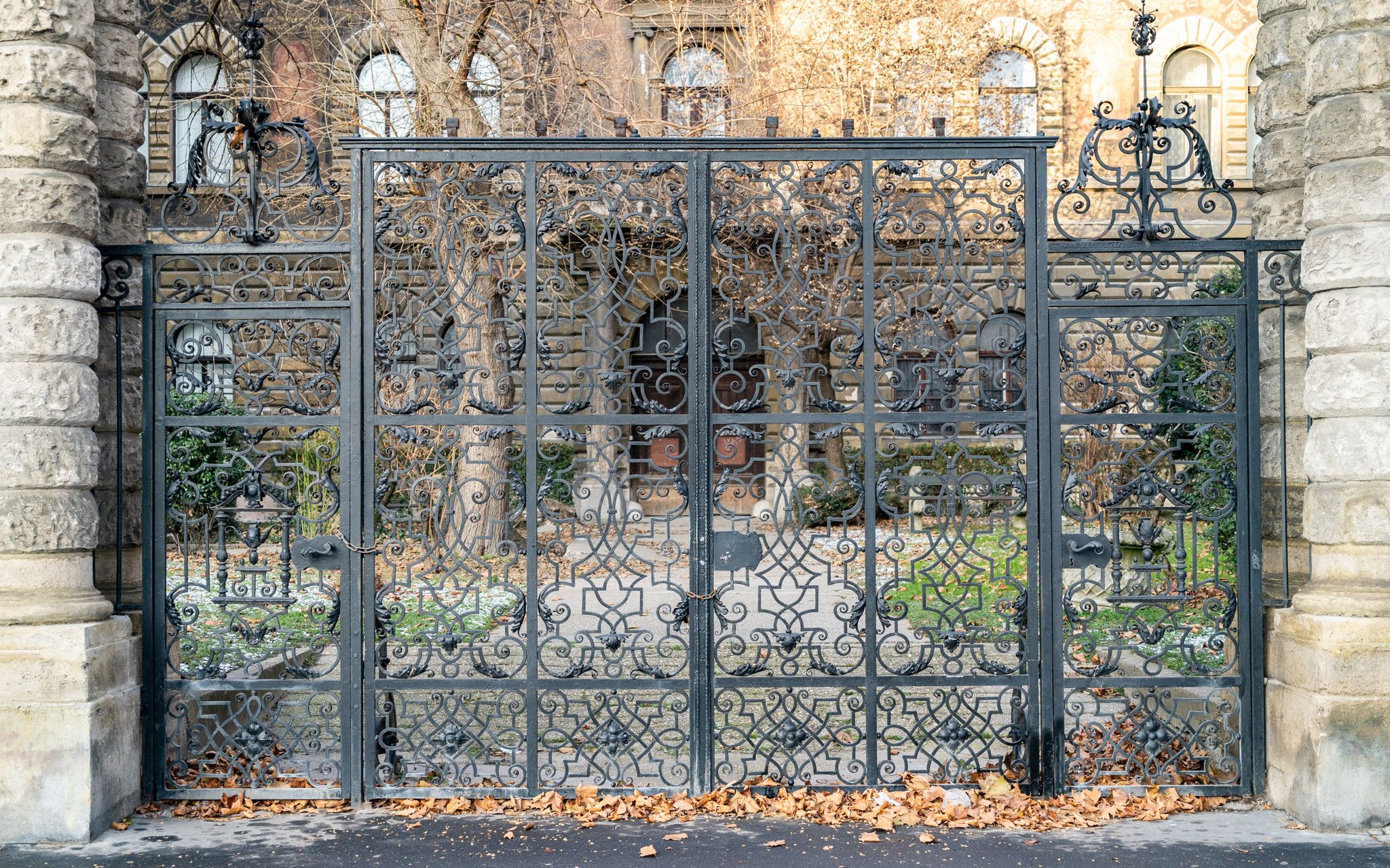
The garden gate of the former residential building owned by the MÁV Pension Institute, 88-90 Andrássy Avenue.
(Photo: Both Balázs/pestbuda.hu)
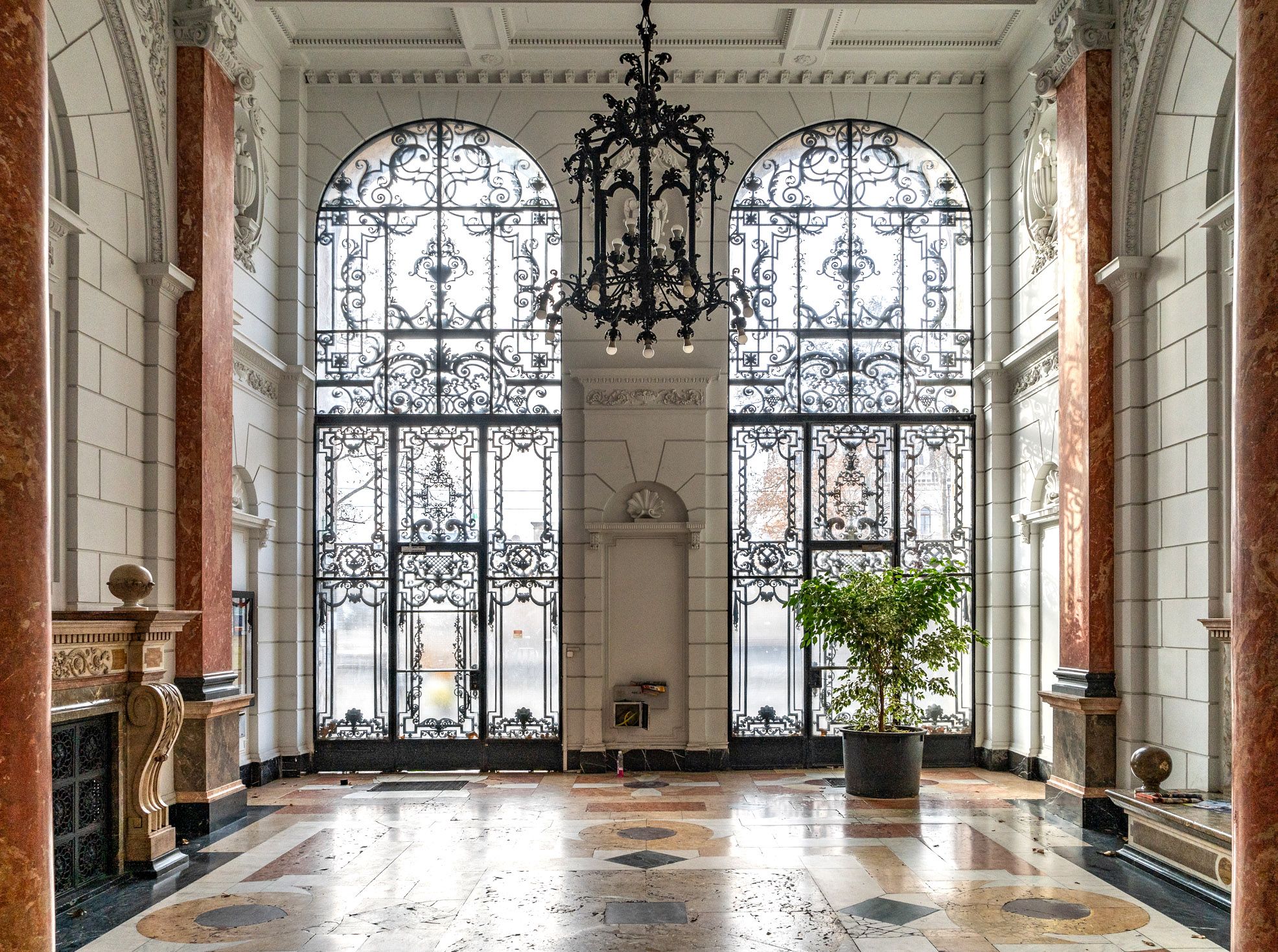
Former residential building of the Hungarian General Coal Mine Pension Institute. Jungfer designed the monumental double gate
(Photo: Both Balázs/pestbuda.hu)
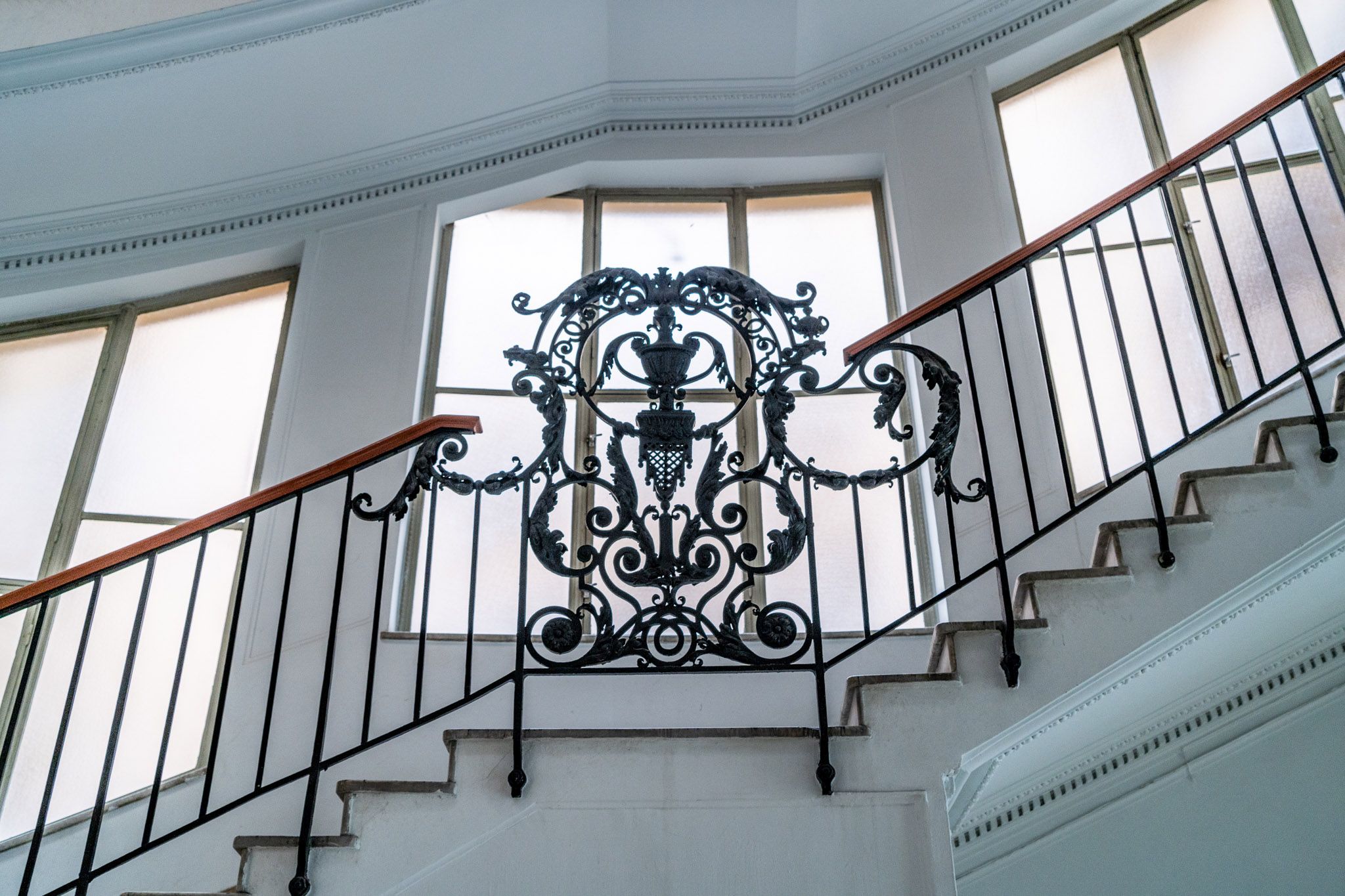
The wrought-iron ornaments of the bannister in the Hungarian General Coal Mine Pension Institute building on Kossuth Square
(Photo: Both Balázs/pestbuda.hu)
There was a great demand for artisan and ornamental blacksmith work in the last third of the 19th century, and eventually, Jungfer could afford to build his own villa. The two-storey building at 20 Városliget Avenue (18/A Városliget Avenue when built) was designed by Artúr Meinig. Gyula Jungfer lived in the house from 1892 until his death in 1908. The villa was then bought by the architect Gyula Ullmann and is now used by the Chinese Embassy. Of course, the fence of the villa was made by Gyula Jungfer. Passers-by can still see the JG monogram on the gate today.
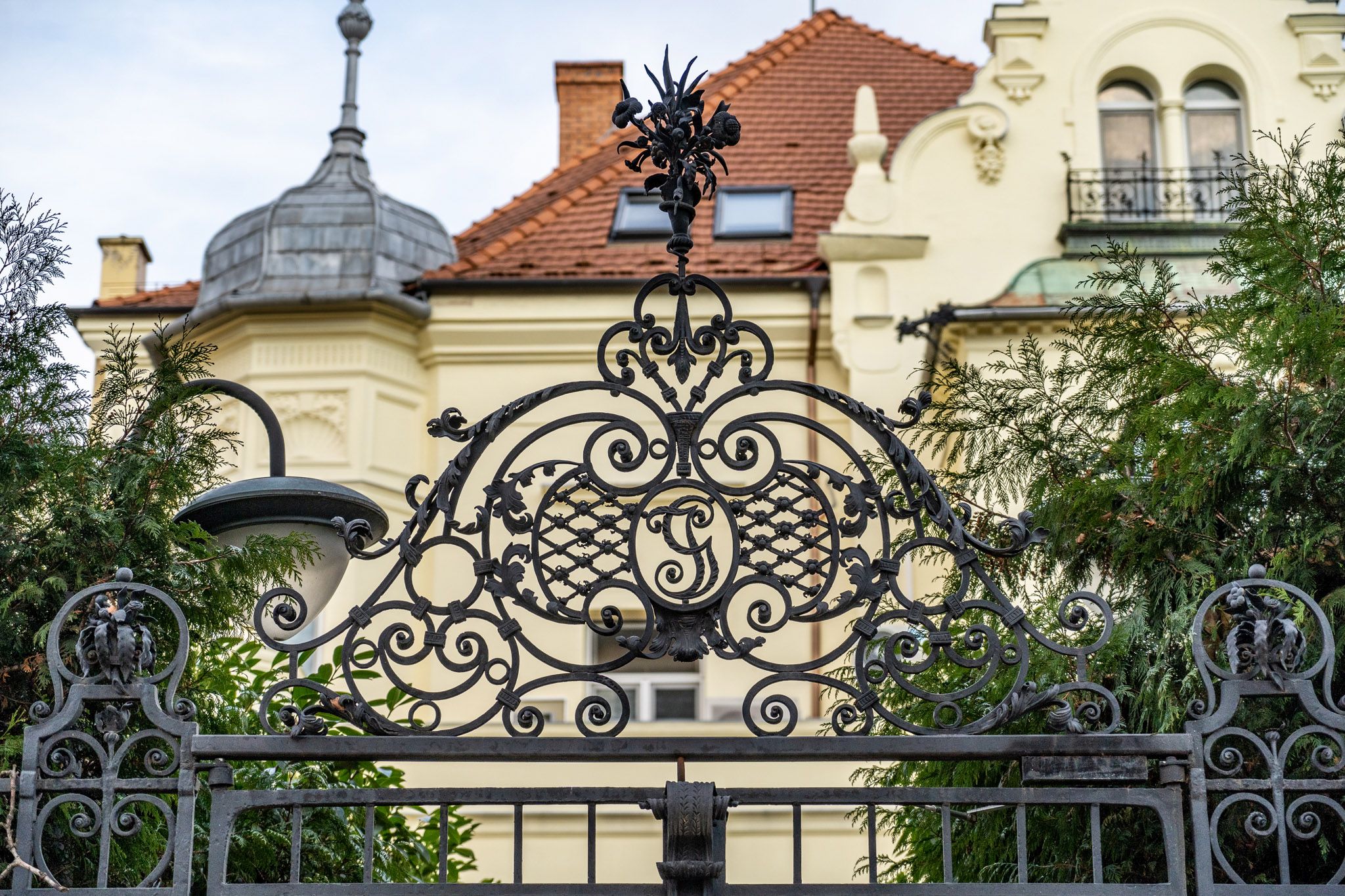
The Jungfer villa at 20 Városligeti Avenue, the JG monogram clearly visible on the ornate fence (Photo: Both Balázs/pestbuda.hu)
A few years after winning a gold medal at the Millennium Exhibition in 1896, his factory received another kind of recognition. In March 1900, King Franz Joseph visited Endre Thék's factory on Üllői út and then went on to Gyula Jungfer's Berzsenyi Street factory. The 18 March 1900 issue of Lakatosok Lapja ('metalsmith's magazine') reported on the visit and stressed that the ruler had spoken with recognition of the work in progress.
Jungfer received not only symbolic recognition but actual awards from the King: the Knight's Cross of the Order of Franz Joseph and the title of Court Metalsmith, as well as the French Legion of Honor and the Knight's Cross of the Order of Leopold. In addition to the 1896 Millennium Exhibition, he also won grand prizes and gold medals at exhibitions in Brussels, Paris and Saint Louis. He also played an active role in public life, serving as a leader in the Society of Metalworkers.
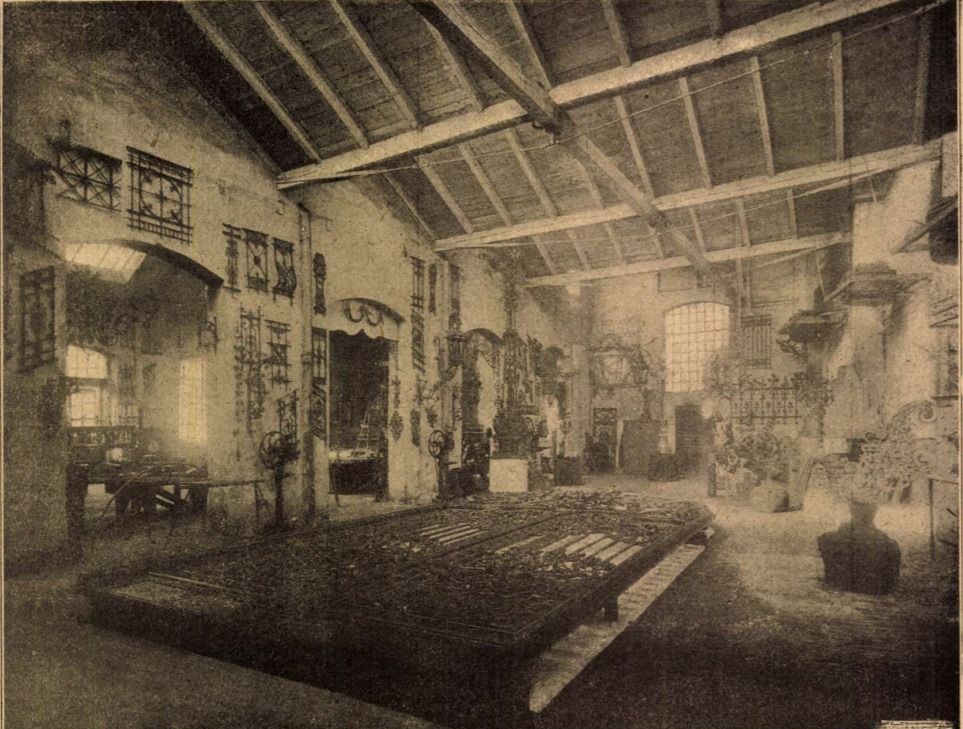
Franz Joseph examined the gate of the Royal Palace, still under production, during his visit to the factory
(Source: Lakatosok Lapja, 18 March 1900)
Gyula Jungfer died on 21 November 1908. The family tomb can be found on the arcade row of the Kerepesi cemetery. His work was continued by his three sons. The Jungfer factory operated successfully until 1949 when it was nationalised by the communist dictatorship. Jungfer's oeuvre was an invaluable step in the renewal of the metalworking industry and changed the image of Budapest. His gates, fences, grates, candelabra and other works of applied art confirm the truth in the inscription on the façade of the former Berzsenyi Street factory: "ore bends to reason."
Cover photo: Art Nouveau peacock gate of Gresham Palace (Photo: Both Balázs/pestbuda.hu)

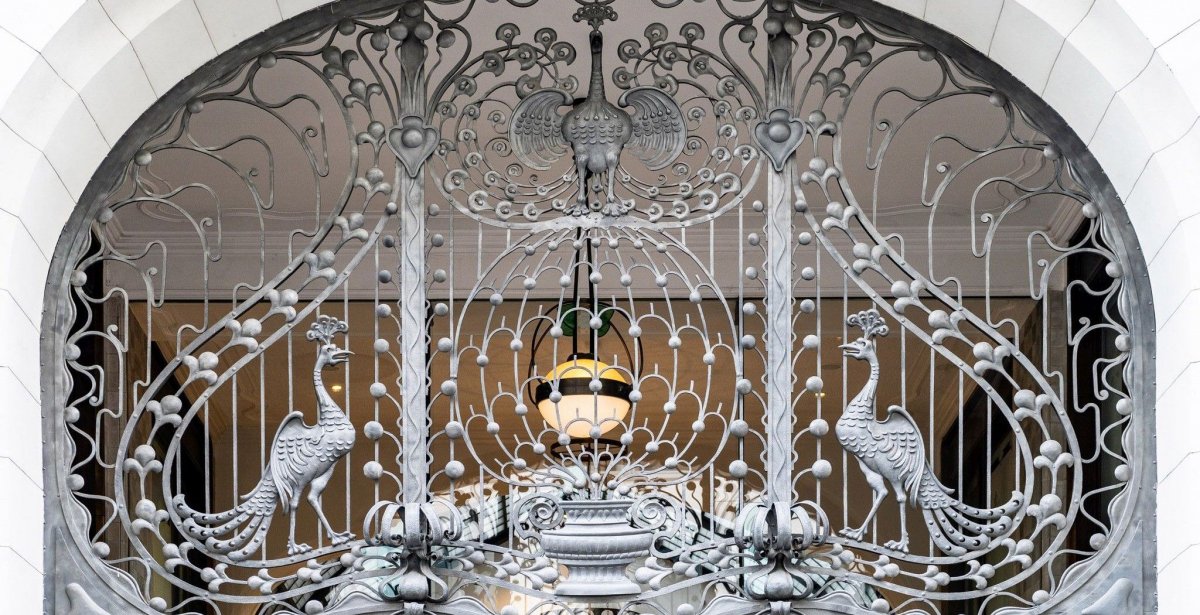

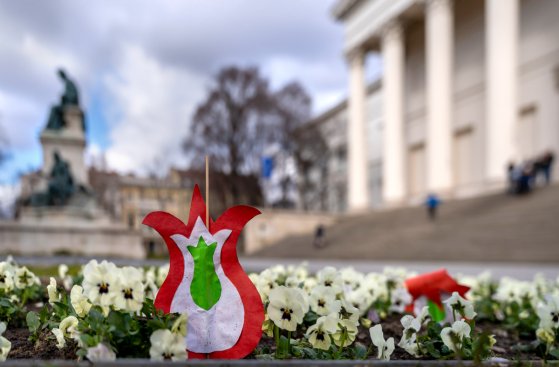

































Hozzászólások
Log in or register to comment!
Login Registration